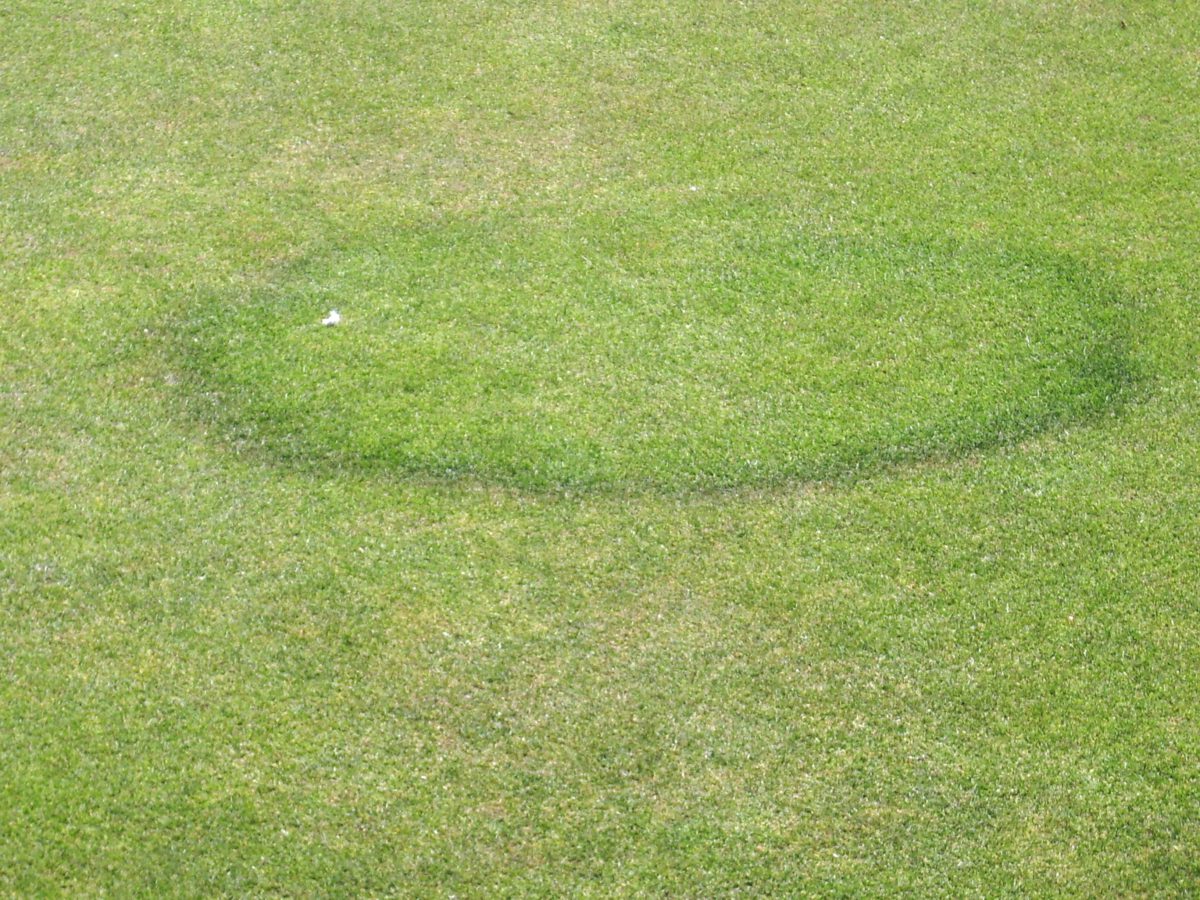The snow is melting in several areas of the country now and with the warmer weather comes its own set of problems.
Dormant grass and moisture in soil can lead to turf-destroying fungi that can be tricky to treat after they emerge.
Here are some common fungi that can affect turf and what you can do to manage them.
Fairy ring
Fairy ring commonly creeps up onto golf courses and home lawns, particularly after it rains. There are 3 types of fairy rings:
- Type 1: These severe rings lead to browned, dead turf and sometimes have fungal structures (mushrooms or puffballs.) surrounding them.
- Type 2: This type has a ring of darkened green where the grass’ growth was stimulated by the fungus. Sometimes, these rings also have fungal structures surrounding them.
- Type 3: This ring consists of only fungal structures without any change in the turf.
Fairy ring does not affect the grass itself but will attack nutrients in the soil making it an unsuitable environment for grass growth.
Spring dead spot
Spring dead spot, also known as bermudagrass disease, is found in bermudagrass and buffalograss and starts spreading through the turf during the dormant season. SDS spreads especially well where the turf is compacted or overrun with thatch.
When the grass comes out of dormancy, the fungus spreads to the leaves, creating circular or arc-shaped patches of straw-colored grass.
Large patch
This fungus is commonly found in zoysiagrass and bermudagrass and is less damaging to the latter.
Large patch presents as circular, discolored areas on the turf with an orange-colored border. The dead centers of the patches will look sunken and may be invaded by weeds. The fungus can spread creating patches of dead grass up to 20 feet in diameter.
What to do
Now that you have identified some common fungal problems affecting warm-season grasses, here are some steps to take to control a fungus infestation in your lawn.
- Control thatch. Fungi spread rapidly through layers of dead grass and organic material, such as thatch. To reduce the chance of spread, consistently dethatch your lawn.
- Water management. Fungi love excessive moisture and water, so be sure your lawn has an effective drainage solution and that you are not overwatering your lawn.
- Ewing carries BASF Pillar G Intrinsic and Quali-Pro Strobe 2L fungicides that are excellent at controlling these fungi, as well as dollar spot, brown patch and other turfgrass diseases.
- Nitrogen to regrow. Warmer summer weather slows growth of these fungi, so put down a product containing both fast/slow-release nitrogen, such as Best 22-4-10 N-FLEXX, HJE 25-0-0 UFlexx with WolfTrax and The Andersons 28-3-10 with UFlexx, in May to speed patch regrowth during early summer and to encourage constant growth throughout the summer.
Still need help? Contact your local Ewing store for more tips on how to manage fungus in your turf.




